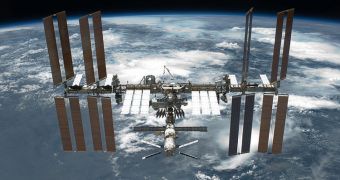Students aged between 14 and 18 will soon have the opportunity to conduct some meaningful science. NASA and a number of its partners announced the creation of the YouTube Space Lab, a platform that will enable teens to design and propose their own experiments for the International Space Station (ISS).
The announcement was made on Monday, October 10. NASA explains that this is part of its efforts to get students more involved in science, math and technology (STEM). These areas of study are currently largely neglected by American youth, and this has grave repercussions for the country.
According to officials at the American space agency, the new contest will result in the selection of two of the proposed experiments. Astronauts on the ISS will then carry out the selected tests some 240 miles (386 kilometers) above the surface of the planet.
YouTube will provide the necessary live transmission feeds, so that students can watch their own experiments being performed in space in real-time. Experts hope that this will enable students to show off their creative and analytical faculties, Space reports.
“The space station really is the greatest science classroom we have. This contest will capitalize on students' excitement for space exploration while engaging them in real-life scientific research and experimentation,” former NASA astronaut Leland Melvin explains in a statement.
At this point, Melvin is the associate administrator for education at NASA Headquarters, in Washington, DC. He adds that Space Adventures, Lenovo, the European Space Agency and the Russian Federal Space Agency are also partners with NASA and YouTube on this project
NASA officials explain that the contest will end on December 7. Until then, students must submit a video application no more than 2 minutes long, in which they must explain the reasons behind their experiments, as well as the methods they plan to use to conduct them.
Entries may be submitted in groups of up to 3 students, but also individually. NASA officials explain that experiments can only cover the fields of physics and biology. After all proposals are centralized, a panel will investigate them in detail.
The 60 most promising ones will be announced during a conference to be held on January 3, 2012. Among those who will be judging the proposed experiments are Bill Gerstenmaier, the associate administrator for Space Operations at NASA and famed physicists Stephen Hawking.
By March 2012, the selection will be narrowed-down to six entries. A total of two winners will be selected, one from the 14-to-16 age group, and another from the 16-to-18 age group. Their experiments will be launched to the ISS aboard the H-II Transfer Vehicle (HTV-3) capsule next summer.
In addition, the winners will also have a choice in terms of their big prize. They will be able to either go to Japan to see the HTV-3 launch, or wait until they are 18 to go to Star City outside Moscow, and carry out astronaut training.

 14 DAY TRIAL //
14 DAY TRIAL //